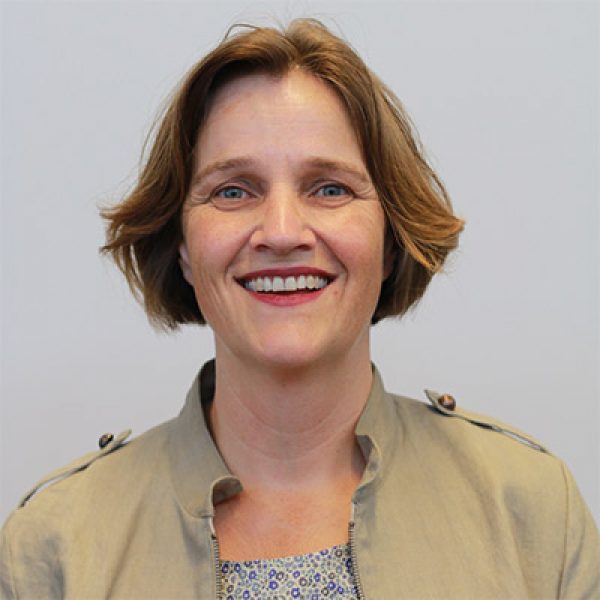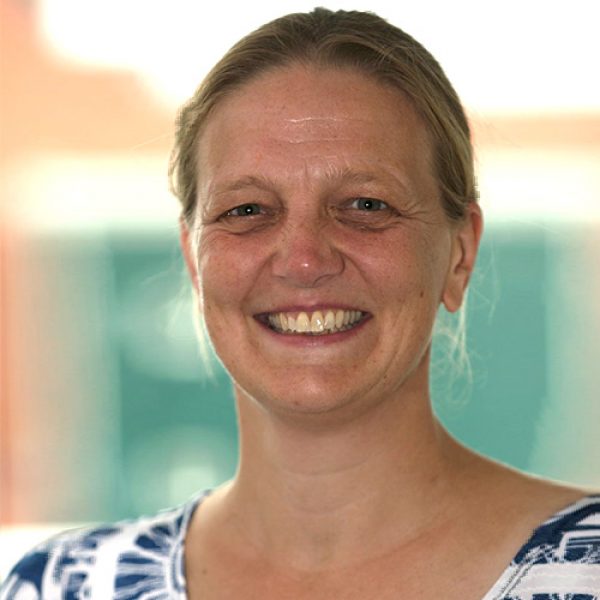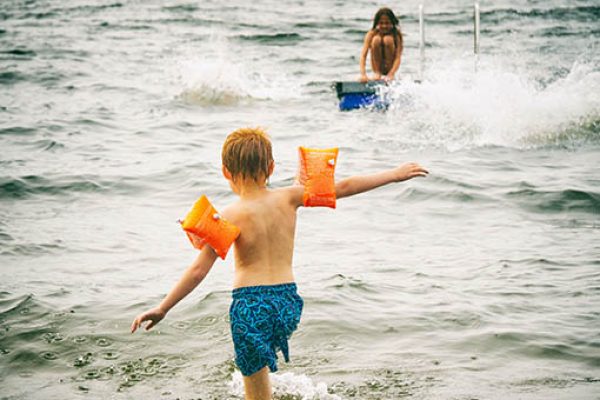Introduction
Local policy makers in Europe increasingly recognize urban waters as attractive features for tourism, water recreation and a healthy lifestyle for members of the public.
Economic prosperity and higher temperatures due to climate change across Europe have resulted in a greater need for water recreation in urban spaces. Urban bathing water sites play a key role in meeting this need.
In this case study, we have analysed the necessary steps from plans to action to create appropriate bathing water sites. The focus is on the building blocks of local governance: capacity to act, the role of stakeholders, differences in values and the use of legal and financial instruments.
Necessary steps to create local urban bathing water sites
Bathing and swimming, in general, is good for people’s health and wellbeing but we have to be particularly careful when bathing in urban waters. Water quality can be poor due to sewage overflows and discharges from the industry. Ships and bulky waste in the water, like bikes, can cause injuries or even drowning.
It is advised to only use official bathing water sites that are signposted, to indicate that they are safe and the water quality is being checked regularly.

The Kralingse Plas is a lake located in the suburb of Kralingen in Rotterdam, the Netherlands.
Two cities, six bathing water sites
BlueHealth researchers have studied six bathing water sites in the Dutch cities of Amsterdam and Rotterdam.
Based on interviews with stakeholders and a review of literature and policy documents, the team has highlighted factors that need to be accounted for when cities want to develop urban bathing water sites. The value of these outcomes has then been tested by an international expert panel and compared to other cities and countries.
Some key factors identified
This study highlights how improved policy designs can enhance urban bathing water interventions. This can be achieved by customizing the policy process to adapt to the characteristics of the local environment and the existing legal and policy frameworks.
- Engage and communicate with local stakeholders and citizens beyond usual networks during all stages of the process.
- Use incentives to kick off policies and organise administrative support
- Include health aspects in the design of a bathing site, right from the start of the process.
- Ensure sufficient financial means for monitoring, management and maintenance once the site is there.
- Anchor urban bathing water policies within relevant urban policies
- Develop a guiding framework on how to act with the authorities involved, especially for locations not officially signposted as a bathing area.
Using these targeted strategies to monitor and follow the progress of interventions will help to create and maintain safe bathing sites in cities, as a means to promote healthy urban lifestyles in the future.
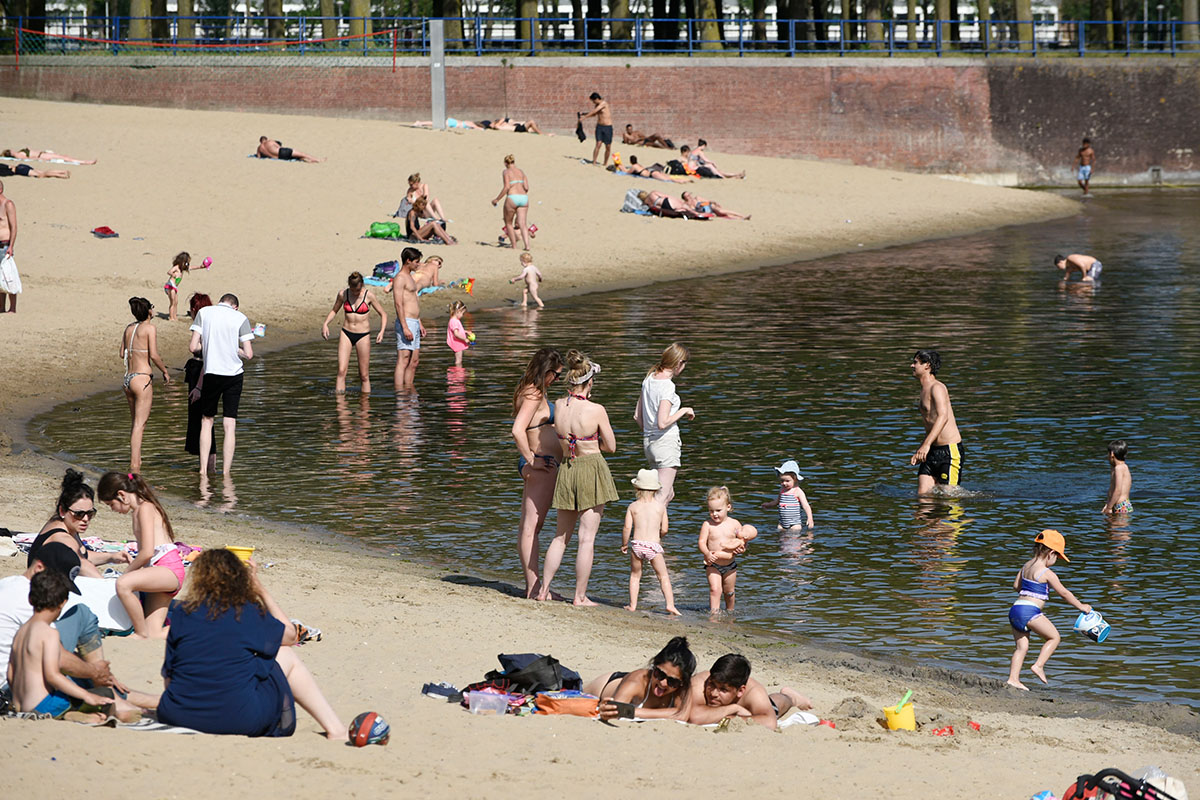
Sloterstrand is an urban beach in Amsterdam popular with families.
Recommendations
Urban planning and public health
The benefits and risks of blue spaces coincide with policies linked to public health, inclusiveness and tourism. These policy fields are usually beyond the traditional professional focus of water authorities. It’s therefore beneficial to look at the broader context of blue spaces in urban planning and public health.
Water authorities and water management departments within municipalities can play an important role in maximising the co-benefits of a blue space intervention. As an example, the actions for ecological objectives of the EU Water Framework Directive (WFD) and public health benefits seem to be taking place on parallel tracks when it comes to bathing waters.
Invest in ‘blue health’ guidance to benefit existing EU regulatory frameworks
The regulatory framework of the European Bathing Water Directive (2006/7/EC), the Water Framework Directive (2000/60/EC) and the Urban Waste Water Directive (98/15/EC) is currently sufficient to develop and preserve safe urban bathing water sites from a generic perspective.
However, our research indicates that further guidance is needed for a better understanding of the interactions between these directives and their local implementation, in order to provide relevant support for local authorities. Decision makers should consider how the urban setting presents specific challenges for improving water quality such as waterbed pollution, oil spills, strong variations in water quality and the many policy actors involved.
For more information linked to this study please contact Susanne Wuijts.
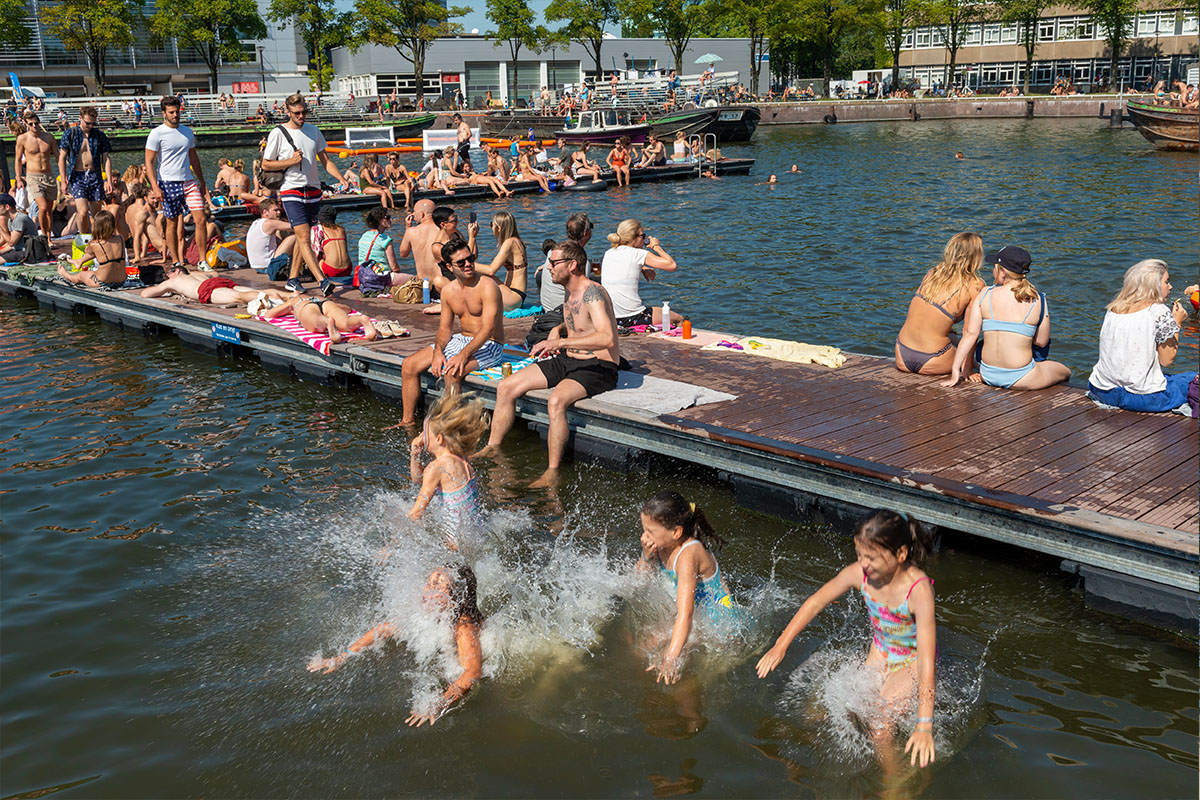
Amsterdam residents often swim in this urban blue space called Marineterrein.



